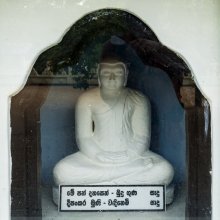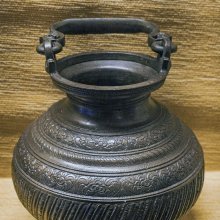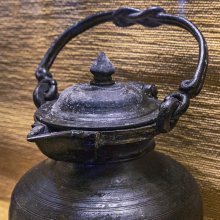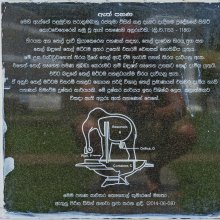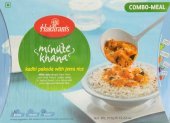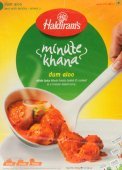Paan: 2 definitions
Introduction:
Paan means something in Hindi, biology. If you want to know the exact meaning, history, etymology or English translation of this term then check out the descriptions on this page. Add your comment or reference to a book if you want to contribute to this summary article.
Ambiguity: Although Paan has separate glossary definitions below, it also represents an alternative spelling of the word Pana.
Images (photo gallery)
(+1 more images available)
Biology (plants and animals)
Source: Wisdom Library: Local Names of Plants and DrugsPaan [पान] in the Hindi language is the name of a plant identified with Piper betle L. from the Piperaceae (Pepper) family having the following synonyms: Piper chawya, Piper malamiris, Piper densum. For the possible medicinal usage of paan, you can check this page for potential sources and references, although be aware that any some or none of the side-effects may not be mentioned here, wether they be harmful or beneficial to health.
Paan [पान] in the Nepali language, ibid. previous identification.

This sections includes definitions from the five kingdoms of living things: Animals, Plants, Fungi, Protists and Monera. It will include both the official binomial nomenclature (scientific names usually in Latin) as well as regional spellings and variants.
Languages of India and abroad
Hindi dictionary
Source: DDSA: A practical Hindi-English dictionaryPaan in Hindi refers in English to:—(nm) betel, betel-leaf; (the act or process of) drinking (water or any other liquid); ~[dana] a metallic box in which betel-leaves, lime, catechu, etc. are kept, betel-leaf receptacle; —[patta] insignificant/meagre offering or presents; —[ka bida] seasoned and folded betel-leaf; —[pherana] to shuffle and reshuffle the betel-leaves; —[lagana] to season a betel-leaf for chewing, to apply lime, catechu, etc. on a betel-leaf and fold it..—paan (पान) is alternatively transliterated as Pāna.
...
See also (Relevant definitions)
Starts with (+142): Paan ki jadh, Paan thuean, Paan-jamboo, Paanal, Paanan chaang, Paanbalibis, Paanch anguli, Paanch-kule, Paanchara, Paandaara, Paandar kaevda, Paandaraa chithra, Paandharakuda, Paandhareejui, Paanee-saaj, Paanee-saro, Paani-jgaar, Paani-jhaar, Paani-velo, Paaniyavalli.
Ends with (+66): Akkinikkarappan, Alippan, Anantakkarappan, Antalappan, Arikarappan, Ataippan, Atappan, Cenkarappan, Cenkarippan, Cikkaruppan, Ciluciluppan, Circilirppan, Compan, Corikkarappan, Desi-paan, Enpan, Goraspaan, Hahapaan, Ilavukotuppan, Jappan.
Full-text (+771): Pan, Bhrashtra, Khallika, Pithara, Rijisha, Ashtakapala, Bhrijjana, Agnishtha, Bhanavashi, Mithagara, Khalvika, Panu, Angarashakati, Bhrashtraka, Kapallaka, Katahaka, Angarakapalla, Angari, Sthali, Akshipat.
Relevant text
Search found 138 books and stories containing Paan, Pan; (plurals include: Paans, Pans). You can also click to the full overview containing English textual excerpts. Below are direct links for the most relevant articles:
Satapatha-brahmana (by Julius Eggeling)
Kāṇḍa VI, adhyāya 5, brāhmaṇa 2 < [Sixth Kāṇḍa]
Kāṇḍa VI, adhyāya 6, brāhmaṇa 2 < [Sixth Kāṇḍa]
Kāṇḍa VI, adhyāya 5, brāhmaṇa 4 < [Sixth Kāṇḍa]
The Skanda Purana (by G. V. Tagare)
Chapter 267 - Importance of Tulāpuruṣadāna (Tulāpuruṣa-dāna) < [Section 1 - Tīrtha-māhātmya]
Chapter 19 - Greatness of Pitṛkūpikā Tīrtha < [Section 1 - Tīrtha-māhātmya]
Chapter 2 - The Benefit of Different Kinds of Charitable Gifts < [Section 7 - Vaiśākhamāsa-māhātmya]
The Religion and Philosophy of Tevaram (Thevaram) (by M. A. Dorai Rangaswamy)
Volume 3 - Introduction to the third volume
Nayanar 7: Amaraneedi (Amarniti) < [Volume 4.1.1 - A comparative study of the Shaivite saints the Thiruthondathogai]
Nayanar 50: Ninra Seer Nedumaara (Ninracir Netumara) < [Volume 4.1.1 - A comparative study of the Shaivite saints the Thiruthondathogai]
Middle Chola Temples (by S. R. Balasubrahmanyam)
Temples in Marakkanam < [Chapter II - Temples of Rajaraja I’s Time]
Temples in Mannarkoyil < [Chapter IV - Temples of Rajendra I’s Time]
Symbolistic Adequacy in the Short Stories of E. M. Forster < [January 1967]
Symbolistic Adequacy in the Short Stories of E. M. Forster < [January 1967]
The River < [April - June 1976]
Bharadvaja-srauta-sutra (by C. G. Kashikar)
Related products
(+19 more products available)
